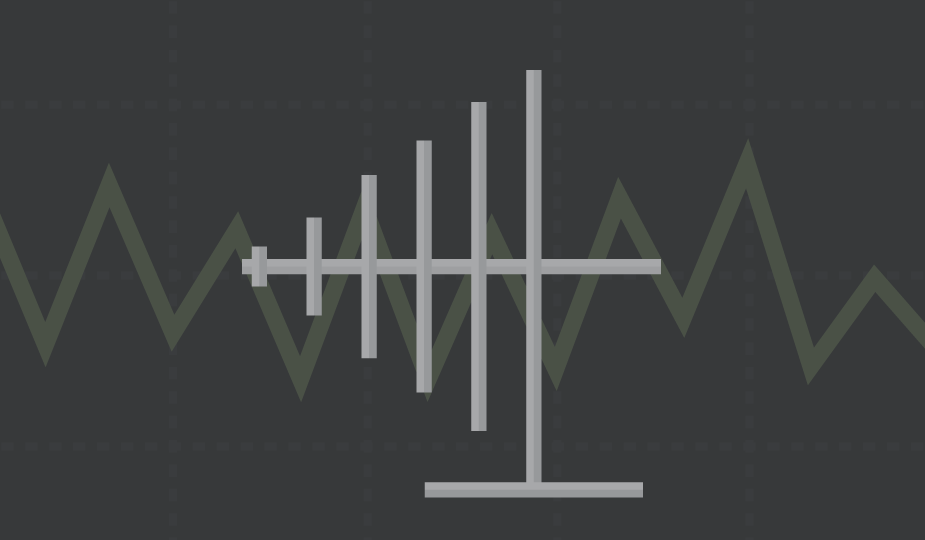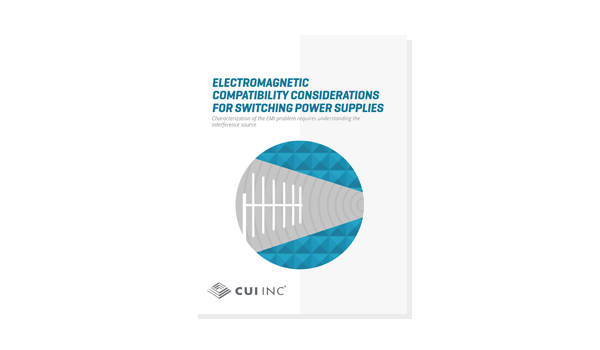What is the Difference Between EMI and EMC in Power Supplies?
January 28, 2020 by Bruce Rose - 5 Minute Read

Discussions regarding electrical noise associated with product design often mention electromagnetic interference (EMI) and electromagnetic compatibility (EMC). Confusion often exists regarding, “What is the difference between EMI and EMC?”. A simple answer is that there is no universal agreement regarding the exact meaning of either term, and thus either term may be used to describe similar concepts.
The International Electrotechnical Commission (IEC) defines EMC to be “ability of equipment or a system to function satisfactorily in its electromagnetic environment without introducing intolerable electromagnetic disturbances to anything in that environment”. This phrase can be simplified to ‘tolerate outside disturbances and do not disturb the outside world’.
The IEC defines EMI as “degradation in the performance of equipment or transmission channel or a system caused by an electromagnetic disturbance”. This phrase defining EMI can be simplified to ‘degradation in performance due to outside disturbances’.
While the IEC provides the definitions described above, there are also power supply vendors who define EMI as the concept of how a product affects the environment in which it is operating, while EMC relates to how the environment around a product affects the operation of the product. Due to the lack of an agreement on definitions, this paper will classify activities as either ‘do no harm’ or ‘tolerate outside disturbances’.
Do No Harm
Discussed below are three common disturbances which are caused by power supplies and associated system designs; conducted emissions, radiated emissions and harmonics. These disturbances can degrade or disable the functionality of electronic equipment operating near to the offending equipment.
Conducted Emissions
The most common concern regarding ‘do no harm’ is emissions, both conducted and radiated. Conducted emissions affect the environment in which the product is operating by sending energy back to the power source along the power conductors. Regulatory agencies have defined maximum levels of acceptable conducted energy in the frequency range of 150 kHz to 30 MHz. When measuring conducted emissions, a line impedance stabilization network (LISN) is placed between the device under test (DUT) and the power source. The LISN provides a standardized isolation between the power source and the DUT and also a standardized load across which the conducted energy is measured.
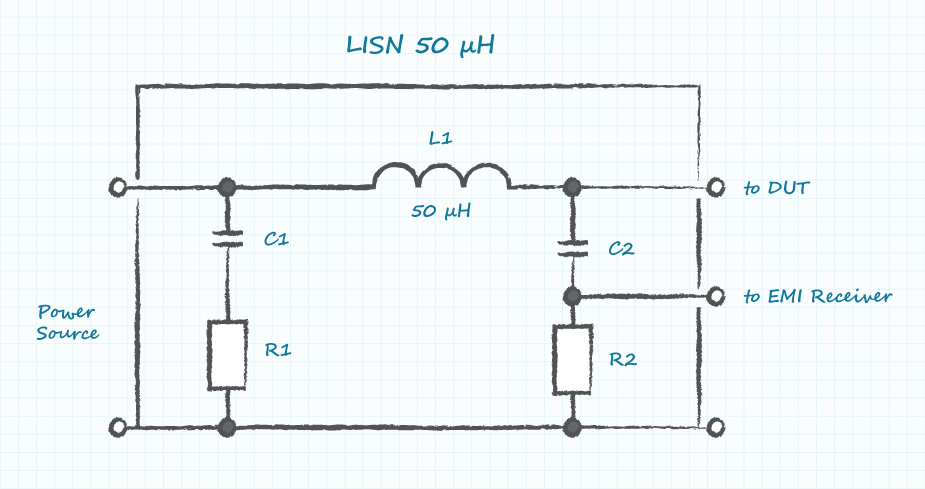
Most power supplies include internal filter components on the input to suppress conducted emissions that are created by the power supply. When the power supply is connected to a system load, it may be the case that unintentional signals from the system load are conducted back through the power supply and appear at the input to the power supply. If unacceptable conducted emissions are measured in the system configuration then the system engineer will need to add components to attenuate the unacceptable emissions.
Radiated Emissions
As the name implies, radiated emissions affect the environment in which a product is operating by radiating electromagnetic energy. Radiated emissions are regulated in the frequency range of 30 MHz to 1 GHZ (and sometimes higher frequencies also). In addition to the system load, radiated emissions may be caused by the power supply or from the interaction between the power supply and the system load. Conductors into or out of the power supply can serve as unintended antennas for radiation of the energy. Unacceptable radiated emissions from the power supply or those from the interaction between the supply and system load are typically addressed by placing filter components on the conductors between the power supply and the system load. These filter components serve to attenuate the energy available to be radiated by the external power supply conductors. Horizontally and vertically polarized broadband antennas operated in an anechoic chamber are used to detect and measure radiated emissions.
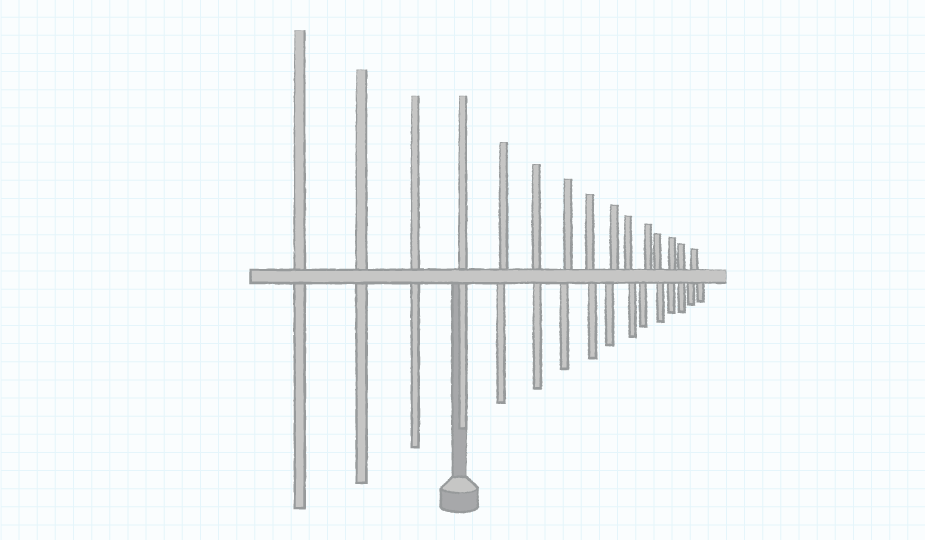
Harmonics
In the case of harmonics, the concern is that many loads on ac power sources are not purely resistive and thus although the source voltage is sinusoidal, the load current is not. A simple example of this concept is the load presented by a power supply due to the input bridge rectifier and filter capacitor. The bridge rectifier draws current and charges the bulk capacitor only during the phase of the voltage when the input voltage is greater than the voltage on the bulk capacitor. The resultant load current waveform on the input of the bridge rectifier is a series of low duty cycle pulses occurring at twice the frequency of the line voltage. This low duty cycle pulsed load current consumes a large amount of energy at harmonic frequencies of the line voltage. Neither the source nor the transmission system of the line voltage is optimized for delivering energy at these harmonics and thus the system operates in a sub-optimal manner. Power Factor Correction (PFC) circuits are required in some power supplies to reduce the harmonic energy drawn by the power supply. The IEC 61000-3-2 harmonic current specifications address the 2nd through 40th harmonics and apply to equipment with a rated current up to 16 A.
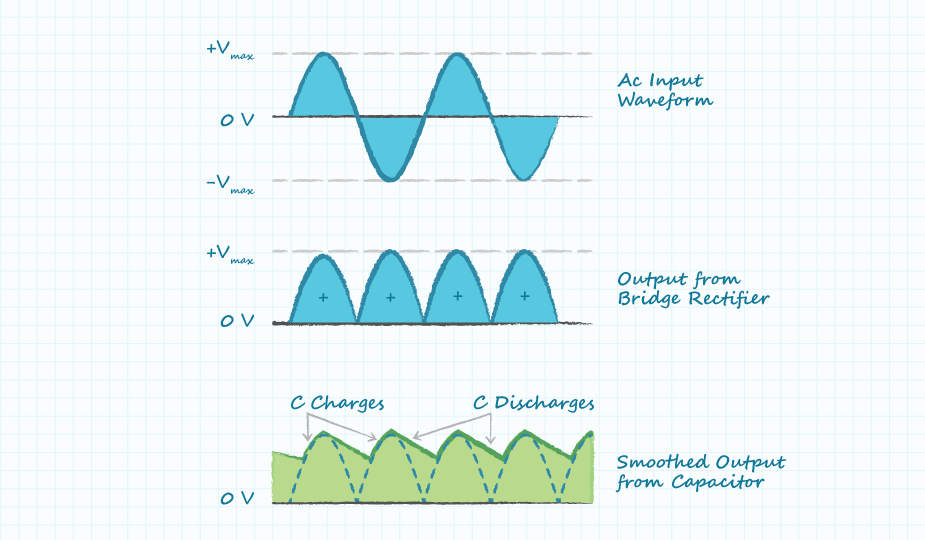
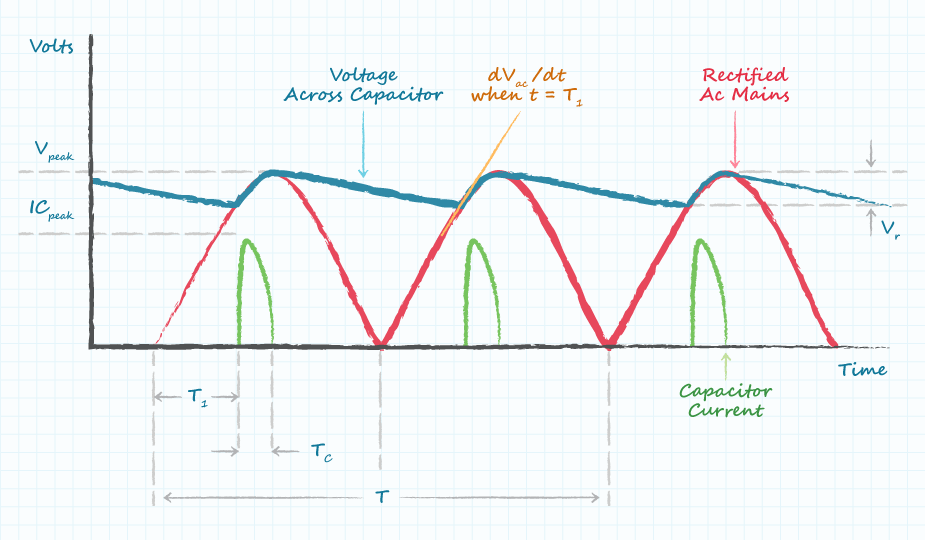
The internally generated disturbance of harmonics applies only to ac powered supplies while conducted and radiated emissions apply to both ac and dc powered supplies.
Tolerate Outside Disturbances
There are many categories of disturbances governed by regulatory specifications for which the power supplies and the associated systems are the victims. Some of them include electrostatic discharge (ESD), electrical fast transients (EFT), surge, and voltage dips and shorts. These external disturbances can affect the performance of a power supply or the associated system. Design and testing are performed to ensure that the power supply and system are able to operate properly in the presence of these disturbances. The listed disturbances of EFT, surge, and voltage dips and shorts all are associated with the quality of the voltage applied to the input of the power supply. External ESD disturbances are generated by interaction with the operating environment.
Summary
The concepts of EMC and EMI are closely related and the common definitions of the terms can relate to either of them. A loose definition which encompasses all the concepts is ‘tolerate outside disturbances and do not disturb the outside world’. While the definitions are not universal, the associated disturbances are specified and regulated by compliance agencies. Power supply vendors, such as CUI, are familiar with the regulatory requirements and are able to assist their customers in producing compliant products.
You May Also Like
Have comments regarding this post or topics that you would like to see us cover in the future?
Send us an email at powerblog@cui.com
